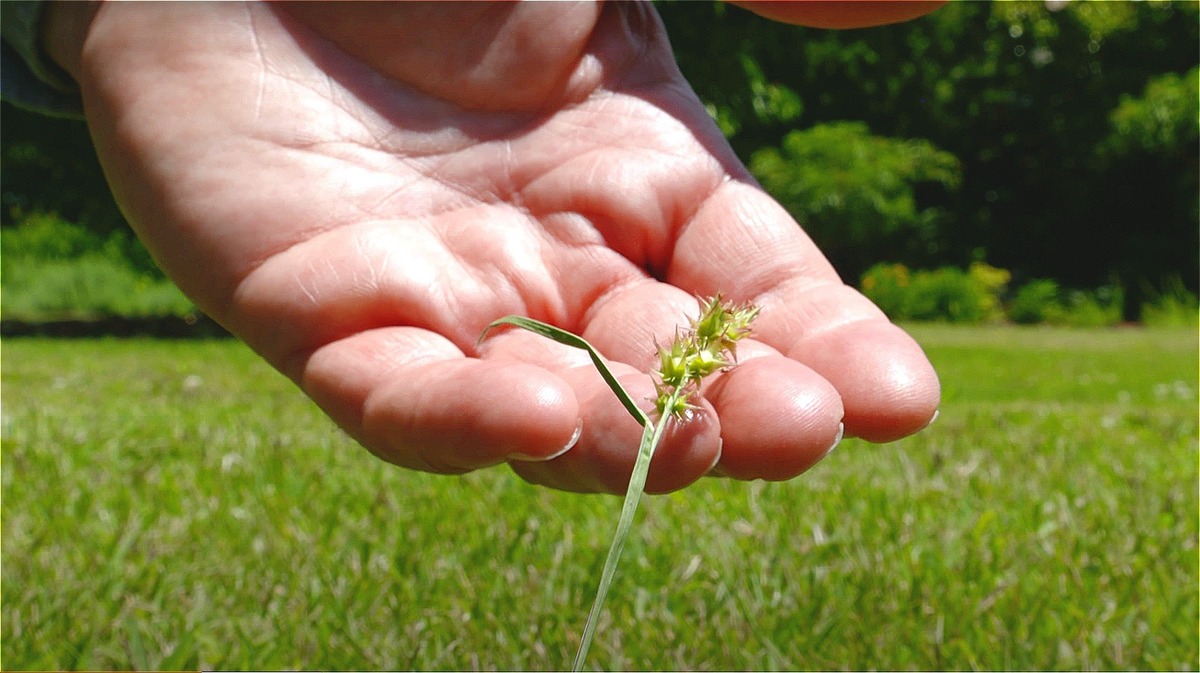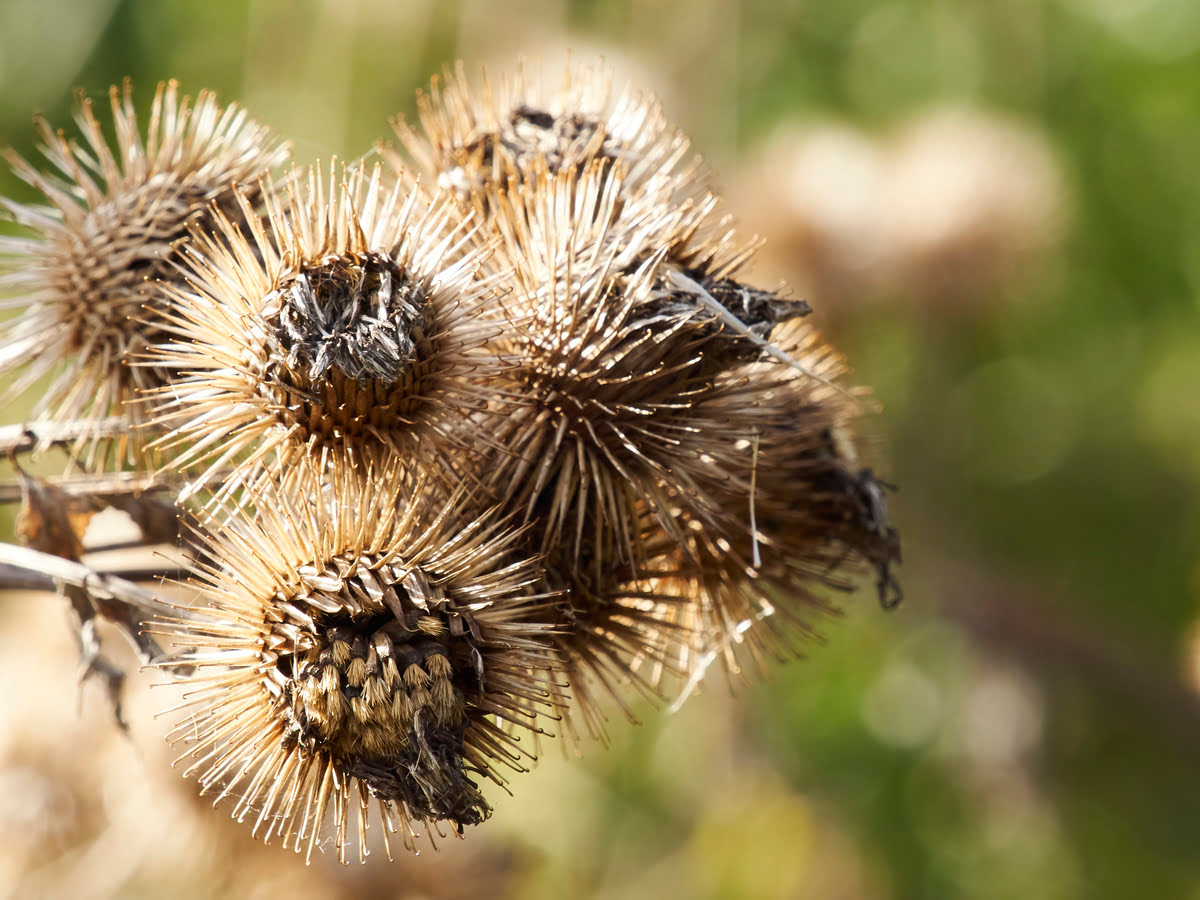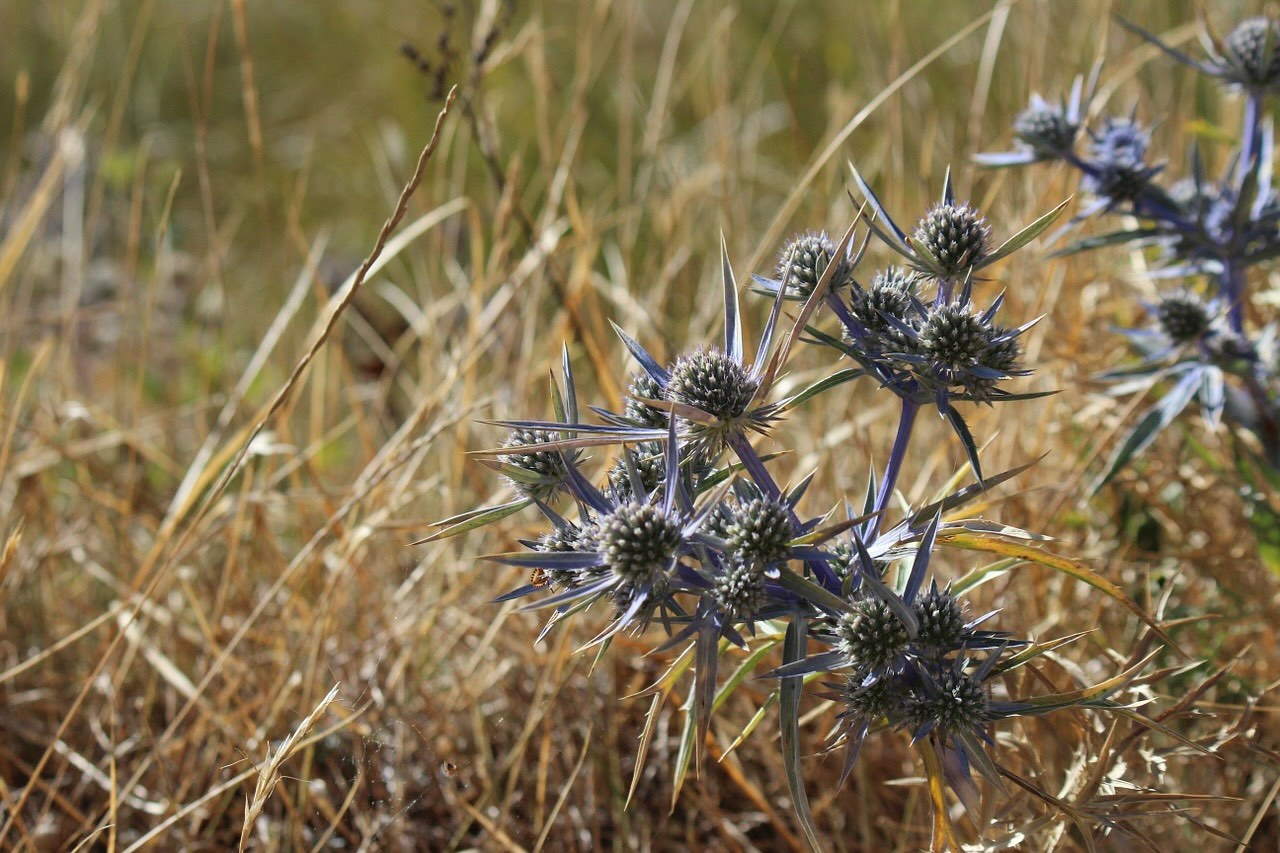Home>Gardening & Outdoor>Landscaping Ideas>How To Get Rid Of Grass Burrs Without Killing Grass


Landscaping Ideas
How To Get Rid Of Grass Burrs Without Killing Grass
Modified: August 27, 2024
Learn effective landscaping ideas to remove grass burrs without harming your grass. Discover expert tips for a lush, burr-free lawn.
(Many of the links in this article redirect to a specific reviewed product. Your purchase of these products through affiliate links helps to generate commission for Storables.com, at no extra cost. Learn more)
Introduction
Dealing with grass burrs can be a frustrating and challenging task for any homeowner or landscaper. These pesky, prickly weeds not only detract from the beauty of a well-maintained lawn but also pose a threat to pets and barefoot walkers. However, the good news is that there are effective methods to eliminate grass burrs without harming the surrounding grass. By understanding the nature of grass burrs and implementing targeted removal and prevention strategies, you can restore your lawn to its lush, burr-free state.
In this comprehensive guide, we will explore various techniques for eradicating grass burrs while safeguarding the health of your grass. From manual removal to the strategic use of herbicides and proactive lawn care practices, we will delve into the most effective approaches to combat this prickly nuisance. Whether you're a seasoned gardener or a novice enthusiast, this article will equip you with the knowledge and tools needed to reclaim your lawn from the clutches of grass burrs.
So, if you're tired of tiptoeing around your yard or constantly fretting about your pet's paws, join us on this journey to banish grass burrs from your lawn for good. Let's roll up our sleeves and dive into the world of grass burr removal and prevention, ensuring a safe, enjoyable outdoor space for all.
Key Takeaways:
- Say goodbye to grass burrs by hand-picking them with protective gear, ensuring you remove the entire plant to prevent reseeding. Consistent monitoring and removal are key to success.
- Keep your lawn healthy and resilient to prevent grass burrs. Proper irrigation, fertilization, mowing, core aeration, and overseeding create an environment that suppresses weed growth.
Understanding Grass Burrs
Grass burrs, also known as sand burrs or sticker burrs, are the bane of many lawn enthusiasts and pet owners. These prickly invaders belong to the Cenchrus genus and are characterized by their spiky seed heads, which can easily attach to clothing, animal fur, and human skin. The most common species of grass burrs include the Southern sandbur (Cenchrus echinatus) and the Field sandbur (Cenchrus longispinus), both of which thrive in warm-season grasses prevalent in many regions.
The life cycle of grass burrs begins with the emergence of small, inconspicuous plants that rapidly develop into low-growing, mat-forming weeds. As they mature, these plants produce seed heads adorned with sharp, barbed spines that readily attach to passing objects. When the seeds come into contact with soil, they can germinate and establish new plants, perpetuating the cycle of infestation.
Grass burrs are particularly resilient and can thrive in various soil types, including sandy and loamy soils, making them a widespread nuisance in lawns, fields, and open spaces. Their ability to adapt to different environmental conditions enables them to proliferate rapidly, posing a significant challenge to those seeking to maintain a pristine lawn.
Understanding the life cycle and growth habits of grass burrs is crucial for effective eradication and prevention. By recognizing their propensity for rapid reproduction and their affinity for specific soil types, homeowners and landscapers can develop targeted strategies to combat these stubborn weeds. With this knowledge in hand, we can now explore the most effective methods for removing and preventing grass burrs, ensuring a lush, burr-free lawn for all to enjoy.
Manual Removal of Grass Burrs
When it comes to tackling grass burrs, manual removal is often the first line of defense for homeowners and landscapers. This hands-on approach allows for targeted removal of the prickly invaders without causing harm to the surrounding grass. Here are the key steps to effectively remove grass burrs manually:
-
Protective Gear: Before embarking on the removal process, it's essential to don protective gloves and clothing to shield yourself from the sharp spines of the grass burrs. Thick gloves and long sleeves will provide a barrier against potential skin irritation.
-
Identify Infested Areas: Take a thorough walk around your lawn to identify the areas heavily infested with grass burrs. Note the locations where the weeds are most prevalent, as these will be the primary targets for removal.
-
Hand-Picking: Armed with protective gear, begin the process of hand-picking grass burrs from the soil. Grasp the base of the weed firmly and pull upward, ensuring that the entire plant, including the root system, is removed. Be cautious not to disperse any detached seed heads during the removal process.
-
Disposal: Once the grass burrs have been uprooted, carefully collect and dispose of them in a sealed bag or container to prevent the spread of seeds. Proper disposal is crucial to prevent the reseeding of grass burrs in other areas of the lawn.
-
Repeat as Needed: Manual removal may need to be repeated regularly, especially during the peak growing season of grass burrs. Consistent monitoring and removal of new growth will help prevent the spread of these weeds and gradually reduce their presence in the lawn.
By diligently following these manual removal steps, homeowners can effectively reduce the population of grass burrs in their lawn without resorting to chemical interventions. However, for larger infestations or persistent growth, additional methods such as herbicide application may be necessary to complement manual removal efforts.
Manual removal not only targets the existing grass burrs but also minimizes the risk of collateral damage to the surrounding grass, preserving the overall health and aesthetics of the lawn. With a proactive and hands-on approach, homeowners can take significant strides toward reclaiming their outdoor space from the clutches of these prickly intruders.
Using Herbicides to Target Grass Burrs
In cases where manual removal alone proves insufficient to control grass burr infestations, targeted herbicide application can be a valuable tool in combating these resilient weeds. Herbicides formulated specifically to target broadleaf weeds, such as grass burrs, offer an effective means of reducing their population while safeguarding the health of the surrounding grass. When considering herbicide application, it is crucial to select products that are safe for use on the specific type of grass in your lawn and to follow application guidelines meticulously.
Before applying any herbicide, it is essential to carefully read and understand the product label, ensuring that it is suitable for controlling grass burrs without causing harm to the desired grass species. Selective herbicides designed for warm-season grasses, such as Bermuda grass or St. Augustine grass, are often effective in targeting grass burrs while preserving the integrity of the lawn. These herbicides contain active ingredients that selectively eliminate broadleaf weeds while leaving grassy plants unharmed.
The timing of herbicide application is a critical factor in its effectiveness. For warm-season grasses, the ideal time to apply herbicides targeting grass burrs is during their active growth phase, typically in late spring or early summer. This timing allows the herbicide to target the weeds when they are most susceptible to treatment, maximizing its impact on the grass burr population.
When applying herbicides, it is important to adhere to recommended application rates and techniques to ensure optimal results. Spot treatment of infested areas or a targeted broadcast application can effectively control grass burrs while minimizing the impact on the surrounding grass. Additionally, taking weather conditions into account, such as avoiding application during windy days or periods of rainfall, can enhance the efficacy of the herbicide treatment.
After herbicide application, monitoring the treated areas for signs of grass burr decline and reapplication as necessary is crucial for long-term control. Regular inspection of the lawn allows for the early detection of any regrowth or new infestations, enabling prompt intervention to prevent the resurgence of grass burrs.
It is important to note that while herbicides can be effective in targeting grass burrs, their application should be approached with caution and in accordance with local regulations. Responsible use of herbicides, coupled with a comprehensive lawn care regimen, can help maintain a healthy and burr-free lawn, providing a safe and enjoyable outdoor environment for all.
In summary, the strategic use of selective herbicides, combined with proper timing and application techniques, can be an invaluable tool in targeting and controlling grass burrs while preserving the health and beauty of the surrounding grass. By integrating herbicide application into a holistic lawn care approach, homeowners can effectively manage grass burr infestations and restore their lawn to its pristine state.
Improving Lawn Health to Prevent Grass Burrs
Maintaining a healthy and robust lawn is a proactive approach to preventing the proliferation of grass burrs. By fostering optimal growing conditions for desirable grass species, homeowners can create an environment that is less conducive to the establishment and spread of these prickly weeds. Here are several key strategies to improve lawn health and deter the growth of grass burrs:
Proper Irrigation
Ensuring adequate and consistent moisture levels in the soil is essential for promoting the vigor of grass while impeding the growth of invasive weeds like grass burrs. Deep, infrequent watering encourages the development of deep root systems in grass, making it more resilient and competitive against weed encroachment. By adhering to a watering schedule that aligns with the specific needs of the grass species in your lawn, you can create an environment that is less hospitable to opportunistic weeds.
Fertilization Practices
Applying the right type and amount of fertilizer at the appropriate times can bolster the health and density of the grass, crowding out potential weed growth, including grass burrs. Utilizing a balanced fertilizer with the correct ratio of nitrogen, phosphorus, and potassium, tailored to the needs of your grass species, can promote vigorous growth and enhance the lawn's ability to outcompete weeds. Additionally, regular soil testing can provide valuable insights into the specific nutrient requirements of your lawn, enabling targeted and effective fertilization practices.
Mowing Techniques
Maintaining the proper mowing height for your grass species is crucial for promoting its health and resilience. Taller grass shades the soil, reducing the opportunity for weed seeds, including grass burrs, to germinate and establish. Additionally, adhering to the one-third rule – never removing more than one-third of the grass blade in a single mowing session – helps maintain the grass's vigor and minimizes stress, contributing to a dense and healthy lawn that is less susceptible to weed infiltration.
Core Aeration
Periodic core aeration of the lawn can alleviate soil compaction, improve air and water infiltration, and stimulate healthy root growth. By enhancing the overall health of the grass and promoting a robust root system, core aeration contributes to a dense and resilient turf that can effectively suppress the encroachment of grass burrs and other weeds.
Overseeding
Introducing new grass seed to fill in sparse areas and promote a dense lawn canopy can help thwart the establishment of grass burrs. Overseeding with high-quality grass seed that is well-suited to the local climate and growing conditions can bolster the lawn's competitiveness, reducing available space and resources for invasive weeds to take hold.
By implementing these proactive measures to enhance lawn health, homeowners can create an environment that is less hospitable to grass burrs and other invasive weeds. A robust and thriving lawn not only enhances the aesthetic appeal of the outdoor space but also serves as a natural deterrent to weed infestations, ensuring a lush and burr-free lawn for all to enjoy.
Conclusion
In conclusion, the battle against grass burrs requires a multifaceted approach that combines targeted removal, strategic herbicide application, and proactive lawn care practices. By understanding the life cycle and growth habits of grass burrs, homeowners and landscapers can develop effective strategies to combat these resilient weeds while preserving the health and beauty of their lawns.
Manual removal serves as an initial line of defense, allowing for the precise extraction of grass burrs without causing harm to the surrounding grass. This hands-on approach, when coupled with proper protective gear and diligent monitoring, can significantly reduce the population of grass burrs in the lawn. However, for larger infestations or persistent growth, the strategic use of selective herbicides can provide an effective means of targeting grass burrs while safeguarding the overall health of the grass.
Furthermore, improving lawn health through proper irrigation, fertilization, mowing techniques, core aeration, and overseeding creates an environment that is less conducive to the establishment and spread of grass burrs. By fostering optimal growing conditions for desirable grass species, homeowners can create a dense and resilient turf that naturally suppresses the encroachment of invasive weeds.
Ultimately, the successful eradication and prevention of grass burrs require a comprehensive and proactive approach that integrates various removal and prevention methods. By combining these strategies and adapting them to the specific needs of the lawn, homeowners can reclaim their outdoor space from the clutches of grass burrs, ensuring a safe, enjoyable environment for all.
As we navigate the challenges posed by grass burrs, it's essential to approach their management with patience, persistence, and a commitment to responsible lawn care practices. By leveraging the insights and techniques outlined in this guide, homeowners and landscapers can take significant strides toward achieving a lush, burr-free lawn that serves as a welcoming and inviting outdoor haven for all to relish.
Frequently Asked Questions about How To Get Rid Of Grass Burrs Without Killing Grass
Was this page helpful?
At Storables.com, we guarantee accurate and reliable information. Our content, validated by Expert Board Contributors, is crafted following stringent Editorial Policies. We're committed to providing you with well-researched, expert-backed insights for all your informational needs.














0 thoughts on “How To Get Rid Of Grass Burrs Without Killing Grass”